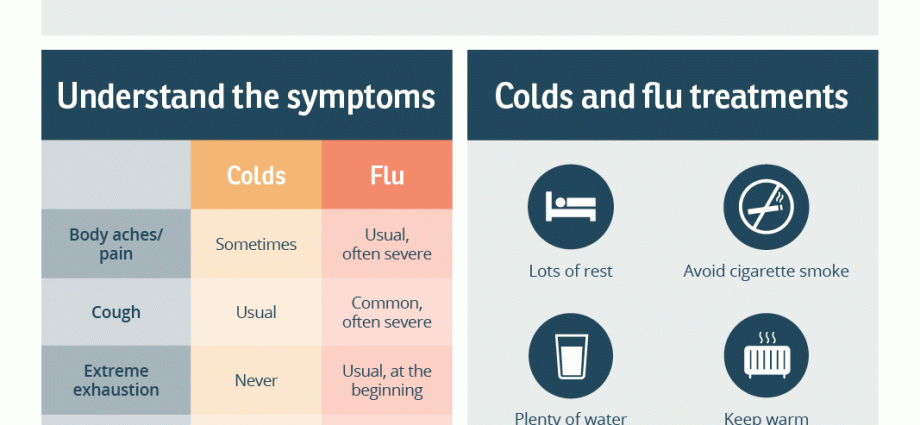Contents
Runny nose, coughing, sneezing – everyone knows these symptoms of a cold. How else can a cold appear in a child? Learn how to recognize a cold and what to do in the event of the first symptoms.
What are the first symptoms of a cold in a child?
The common cold is a generally harmless viral inflammation of the lining of the nose, throat and bronchus and should not be confused with real flu caused by flu viruses. A cold causes many symptoms, the severity of which may vary from child to child. The typical course of a cold can be divided into three phases – the virus incubation period, the acute phase, and the recovery period.
One of the first signs of a cold, which usually appears within three days of infection, is an itching or tingling nose. Young children may also appear tired, fussy and lethargic in the first days of catching a cold.
The first symptom of a cold in a child may also be hoarseness and a sore throat, which gradually worsens and may even cause swallowing problems. Over time, as the virus multiplies in the body and the immune system is under the greatest strain, symptoms become more intense, with a runny nose and fever. Common symptoms in children are also decreased activity, decreased sleep and lack of appetite.
Even if colds are mostly harmless, there is some uncertainty and sometimes it’s better to see a doctor. It is also worth visiting a specialist with the following symptoms, regardless of the child’s age:
- High fever (over 38,5 degrees)
- Breathing problems
- Sensitivity to touch
- Strong and persistent cough
- Ear ache
- Inability to maintain adequate hydration, passing urine less frequently [1]
What is the difference between a cold in a child and an adult?
Children catch colds much more often than adults. This is because their immune system must first learn to develop proper defenses. Adults have a significant advantage here because their bodies have dealt with and learned to fight many different pathogens over time. For children, however, these pathogens are still new and the body does not yet know how to respond to them.
Over time, your baby’s immune system develops a ‘protective shield’ to help deal with colds that are less common. There are no rules for how often children get sick. However, it can be said that a child in the first years of life can develop mild infections up to 12 times a year, and this is perfectly normal.
How to distinguish the symptoms of a cold in a child from allergies?
While a cold and allergy can have similar symptoms, there are guidelines that can help you distinguish between an allergy and a cold in a child. First of all, allergy symptoms usually appear immediately after contact with the allergen. Cold symptoms develop gradually over the course of a few days. Moreover, colds usually resolve within 7-10 days, and allergy symptoms can last for weeks or months and are present as long as there is contact with the allergen.
Runny nose and sneezing are common symptoms of both colds and allergies. If a child has an allergy, the mucus is usually clear, thin and watery. When you have a cold, the discharge when you cough or sneeze is usually thick and yellow or green. In the course of allergy, there is also no fever or muscle pain. [2]
How to fight a cold and the first symptoms?
If your child has a cold, you can only alleviate the symptoms. However, it is worth starting to act as soon as possible to best support the body in the fight against infection. OTC drugs such as Pelavo Med – a medicinal plant product in the form of an orange-mandarin syrup, suitable for children from 6 years of age are helpful. The main active ingredient in Pelavo Med is the dry extract of pelargonium root (Pelargonii radicis extractum siccum), which naturally supports the treatment of colds.
How to protect a child from another infection?
First, all parents should understand that a child will sometimes catch a cold, no matter what preventive measures are taken by the caregivers. Colds can only be prevented to a limited extent by taking simple preventive steps:
- Make sure everyone in the house is hygienic at all times, washing their hands frequently, especially before eating, and covering their mouth and nose when they sneeze or cough.
- As much as possible, do not allow your child to come into contact with sick people, and warn sick siblings not to come too close to the child for several days.
- Wash and disinfect your child’s toys frequently.
- Try to regularly ventilate the rooms in your home and keep the air properly humid.
- Teach your child not to share drinking bottles, food and utensils with others (e.g. in kindergarten or school).
- Take care of your child’s healthy nutrition and regular physical activity [3]










